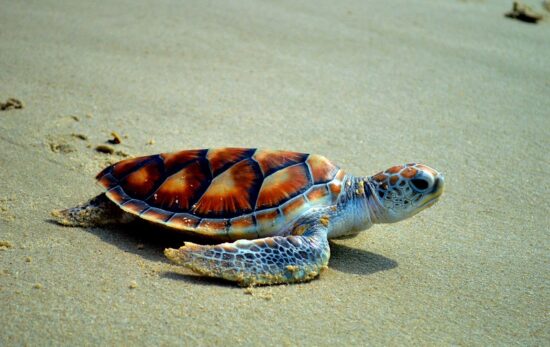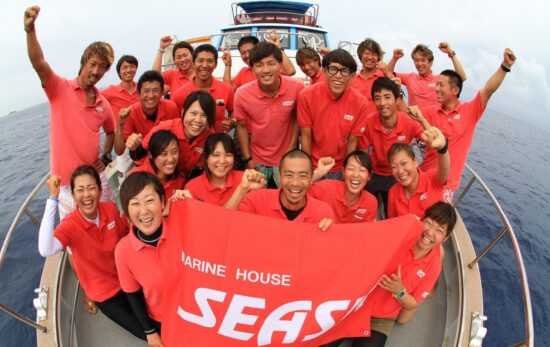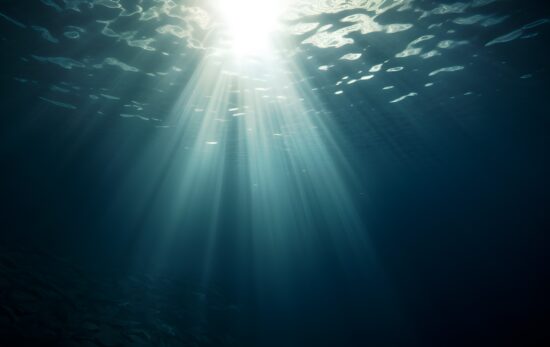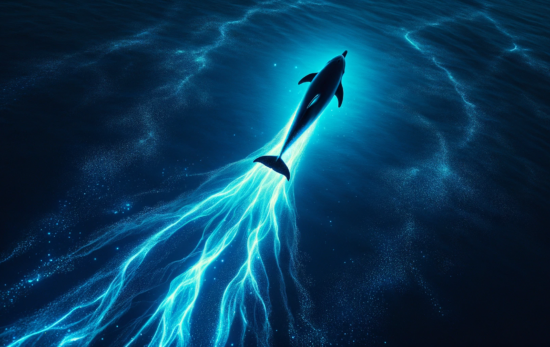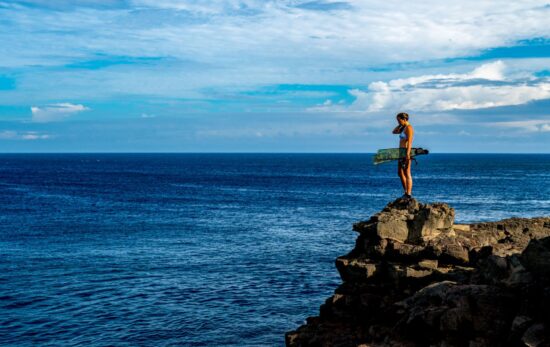There are countless reasons to make it a priority to dive in the United States. The U.S. offers varied and exceptional dive sites, with plentiful access to the Atlantic Ocean, the Pacific Ocean and the Gulf of Mexico. From the Florida’s barrier reef to California’s kelp forests, you’re bound to find dives to spark your love of the sport, as well as the environment. Explore just a few of the amazing dive sites in the top four diving states of this beautiful country.
Florida
Florida’s dive sites are world-renowned, and for good reason! Take a look at a map of Florida and you’ll see why there are so many opportunities to dive in the United States, especially in the Sunshine State. This peninsula state hangs into the Gulf of Mexico and Atlantic Ocean, surrounded by water on three (yes, three!) coasts. Florida’s oceans contain sea turtles, lemon sharks, groupers, puffer fish, stony symmetrical brain coral, and so much more! Check out just some of the amazing dive sites you can find in this coastal state.
The USNS General Hoyt S. Vandenberg
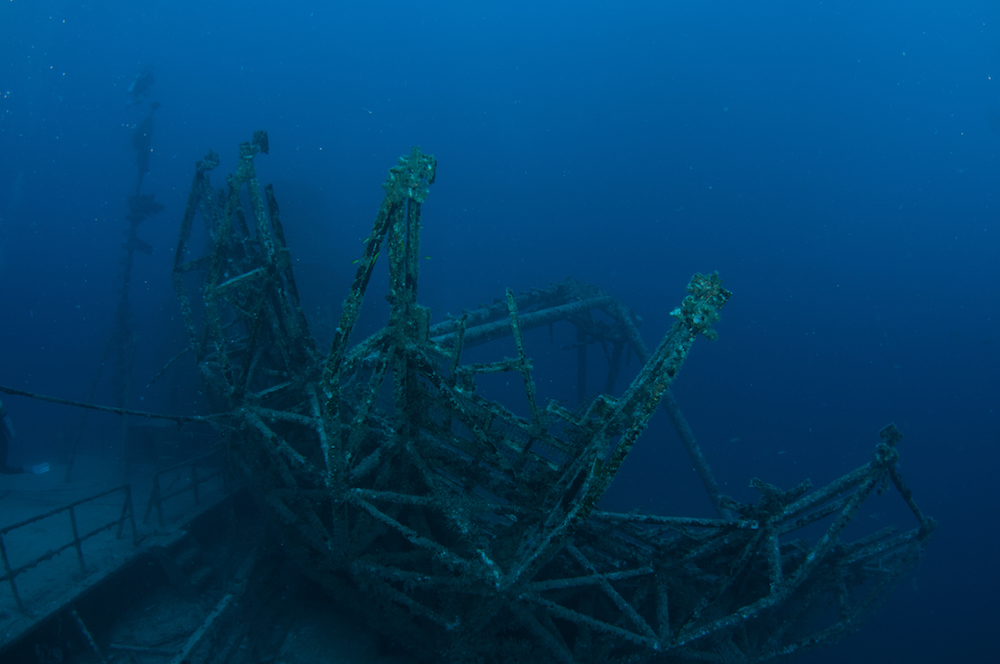
The USNS General Hoyt S. Vandenberg, nicknamed ‘The Vandenberg’ by the locals, is located off the coast of Key West and has become a main attraction for divers from all over the world! This ship is the 2nd largest artificial reef, measuring in at 522’ long and 11 stories tall. Due to Hurricane Irma’s impact the ship now sits at its deepest in 165’ of water. The main deck lies between 100’ and 105’ with the tallest super structures ranging anywhere from 55’-70’ deep. The top of the structure hosts the ship’s most interesting attributes, some purposely cut from one part of the ship and welded elsewhere to make attention-getting dive spots from bow to stern.
Location: Offshore, Key West, Florida
Key Largo Dry Rocks
A dive site known as the Key Largo Dry Rocks hosts the Minnow Caves, is a particularly popular site in the Keys. The site takes its name from an amazing swim through that fills nearly completely up with Atlantic Silverside minnows during the summer months. The site is a great option for people looking to avoid tourist crowds, and an awesome novelty dive when the minnows are in full season.
Nearby, a few more sites, such as Horseshoe Reef, allow the opportunity to hammer out a couple shallow water dives. The massive minnow balls are definitely the biggest draw to this area, and make the dive worth checking out. But, you’ll also find: spiny lobsters, turtles, green moray eels, the occasional octopus, and the usual cast of reef fish. Grouper have also been known to make appearances!
Location: Offshore, Key Largo, Florida
Blue Heron Bridge
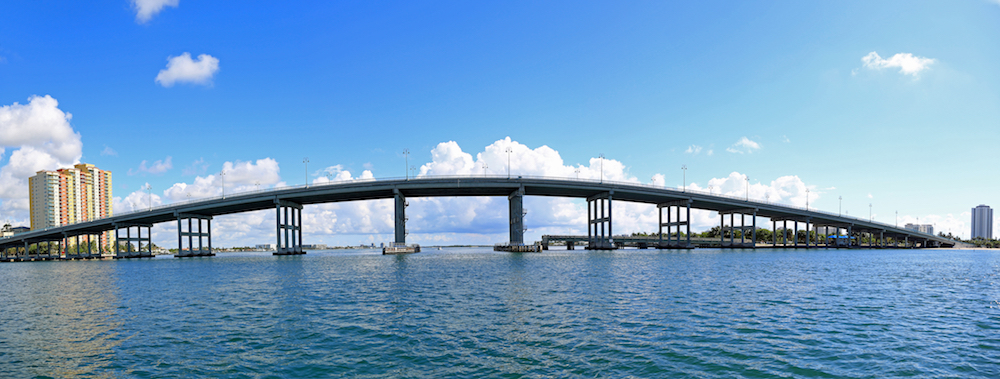
It’s impossible to talk about diving in Florida without mentioning Blue Heron Bridge. Though it seems like an unlikely dive site, situated along the Miami intercoastal waterway and underneath an overpass, this marine park often makes ‘best of’ lists of places to dive in United States. The structure attracts a variety of tropical reef fish, as well as larger fish from snappers to barracuda. The sandy eel grass surrounding the area is the perfect place for macro photography. The calm grassy bottom is a nursery for juvenile reef fish, where octopi, flounder, skates and rays hide in the sand. If you’re lucky you might even see a pair of spotted eagle rays!
Location: Blue Heron Blvd, West Palm Beach, FL 33404
Jupiter Shark Diving
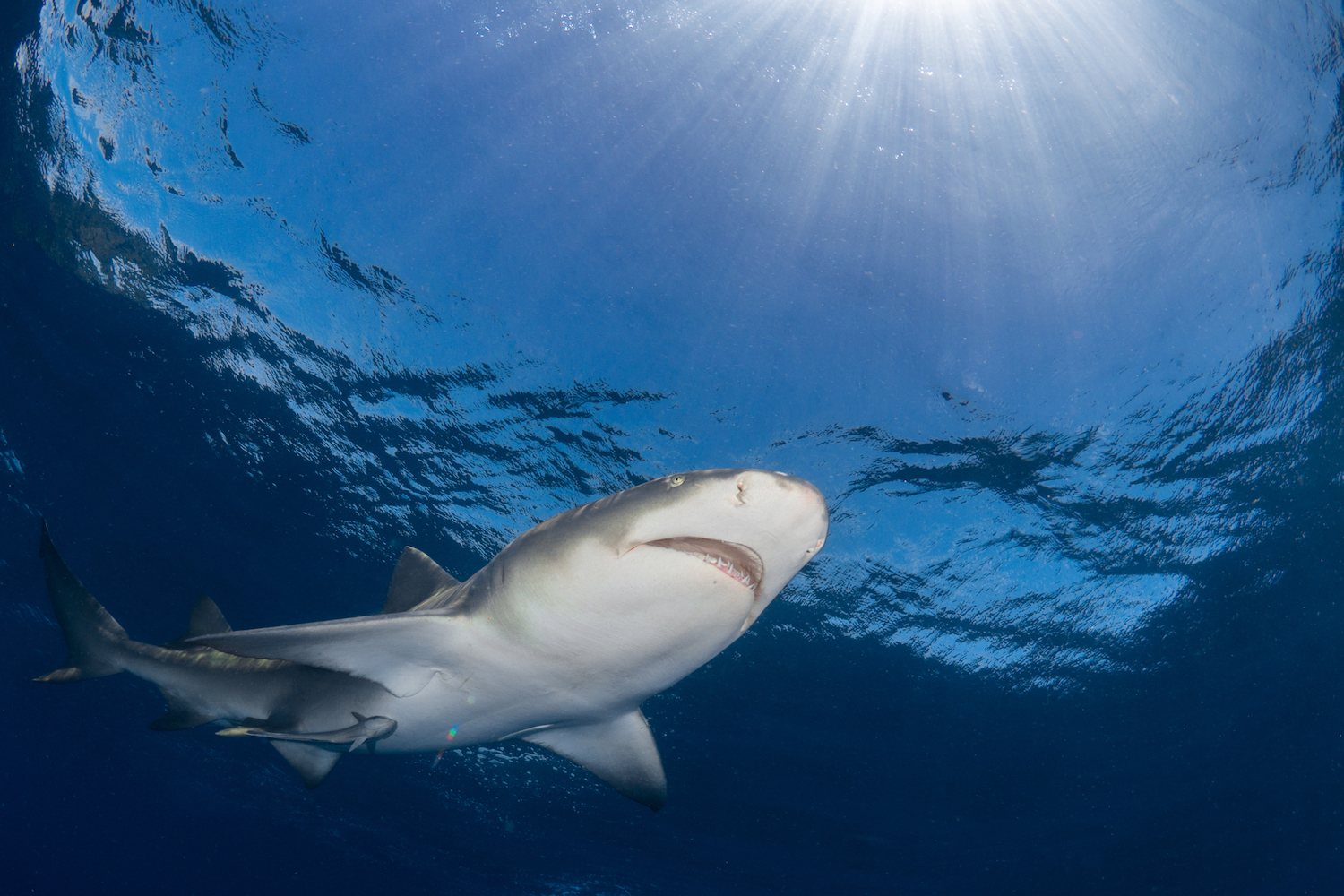
Jupiter is known in the United States as the mecca of shark diving. Due to powerful Gulf Stream currents, the style of diving in Jupiter is always drift dives, and the Atlantic coast of Jupiter displays an abundance of wildlife: Schools of fish, sea turtles and large groupers. Jupiter is a very productive region with a large host of marine life, so there’s also bound to be appearances by apex predators. Large numbers of sharks congregate in Jupiter year round, but it’s not just the sharks and the consistency of sighting them that make this dive location so exciting, it’s the high profile species such as Tiger, Hammerhead, and Lemon that migrate through the area.
Location: Offshore, Jupiter, Florida
California
California offers many dive sites, which feature unique ecosystems and organisms that you won’t find anywhere else. The diving in California is varied and spectacular, but if there’s one thing that defines this state’s dive experience, it’s the massive kelp forests! Check out just some of the unique dive sites you can find in this seaside state.
La Jolla Shores Cove
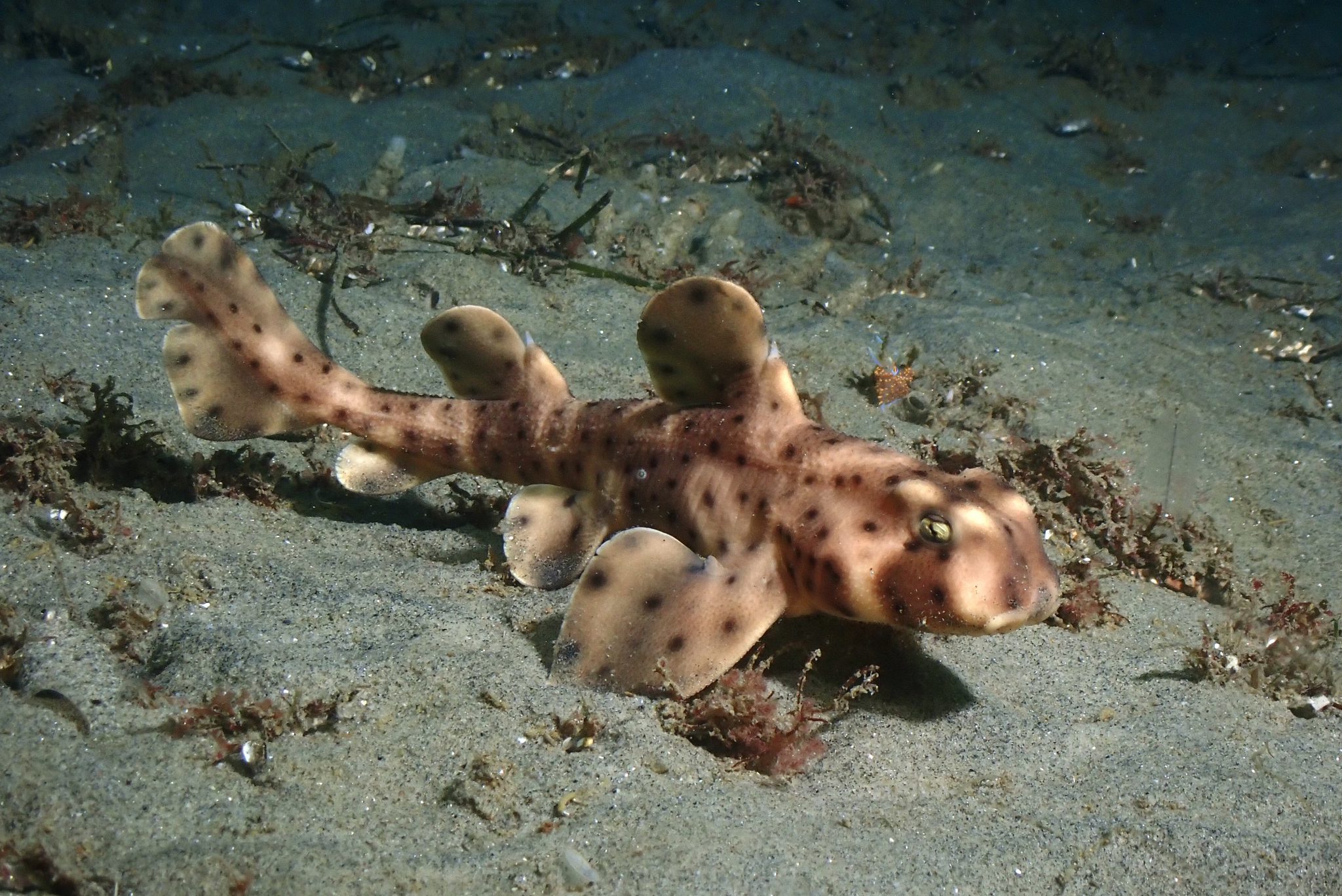
At La Jolla Cove, divers can experience the Matlahuayl State Marine Reserve, which honors the local Native American culture. Thanks to the preservation of this site, you can often spot lobsters, leopard sharks and octopi. Here, you get to scuba dive among the magnificent sheltered kelp forest that is signature to Matlahuayl State Marine Reserve. You’ll may even get to see some California staples, such as sea lions, seven gill sharks, and other small sharks, too!
Location: 1100 Coast Blvd. (at Girard Ave), La Jolla, CA 92037
Catalina Island Reef Park
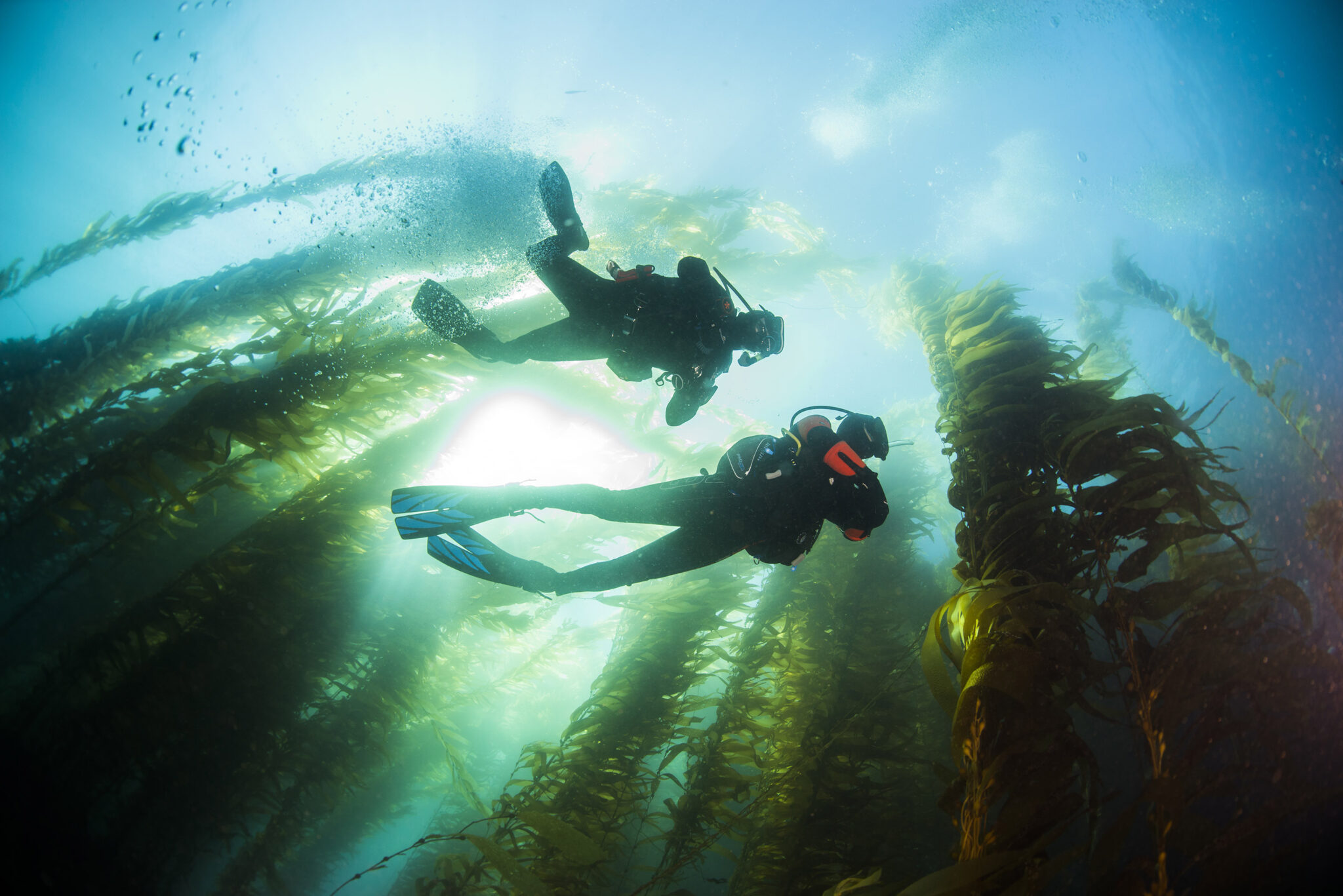
As the nation’s first nonprofit underwater park, the Avalon Underwater Dive Park is one of So Cal’s most popular dive sites. In addition to the famous flying fish that populate this area, the park is brimming with brilliant orange Garibaldi fish. Scuba divers tour the shipwrecks and reefs of Avalon with crystal clear waters. Nearby, Lover’s Cove and Descanso Beach offer even more great diving.
Location: Pebbly Beach Rd, Avalon, CA 90704 (Catalina Ferry and Boat Terminal)
Southeast Farallon Island State Marine Reserve
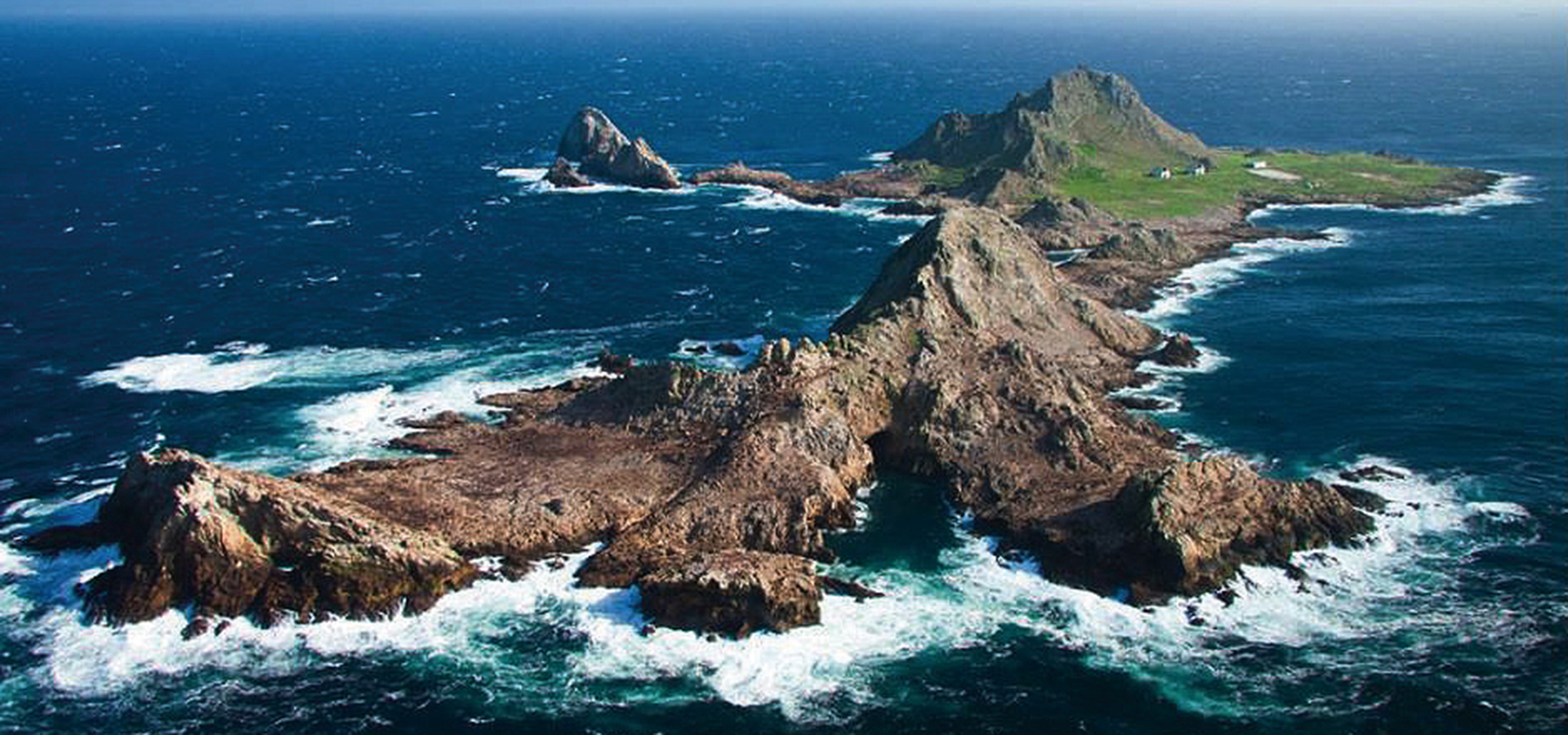
Make your way to the Farallon Islands, aka Farallones, one of the most famous spots to dive in the United States for ecotourism. Dive among sea stacks as you swim around and through this group of islands, located off the San Francisco coast. If you are a fan of whales, prepare yourself! The Farallon Islands are known for a population of humpback, blue, gray and killer whales that congregate here every summer and fall. The upwelling of a unique and powerful current within Greater Farallones National Marine Sanctuary creates one of the most spectacular and biodiverse marine ecosystems on the planet. It’s also one of the largest feeding grounds for white sharks, 36 species of marine mammals, over 390 species of fish, and over 330 species of invertebrates – deep sea corals, sponges, shrimp, crab and other mollusks and crustaceans and so much more!
Location: Offshore near San Francisco, California
Wreck Alley
San Diego offers a one of a kind diving experience. At Wreck Alley, you can dive the Yukon, California’s most well-known shipwreck. Dive to about 100’ to find a 366’ foot long Canadian Destroyer, which sits port side. This ship is unique in that its completely intact and hosts many different marine organisms. Plan for a weekend-long trip to Wreck Alley in order to explore the entire site. The Yukon is not solo.. Ruby E. is another great ship sunken in Wreck Alley.
Location: Offshore near San Diego, California
Texas
Although you may not have previously pinpointed Texas as a top state for diving, you may be surprised at the unique dive sites available in the lone star state. The underwater world will strike you with its beauty while diving in Texas: natural springs, man-made lakes and the Gulf of Mexico offer many unique experiences. You may just be pleasantly surprised at the sites you can dive in the United States. Check out just some of the diverse dive sites you can find in this large state.
Valhalla Nuclear Missile Silo
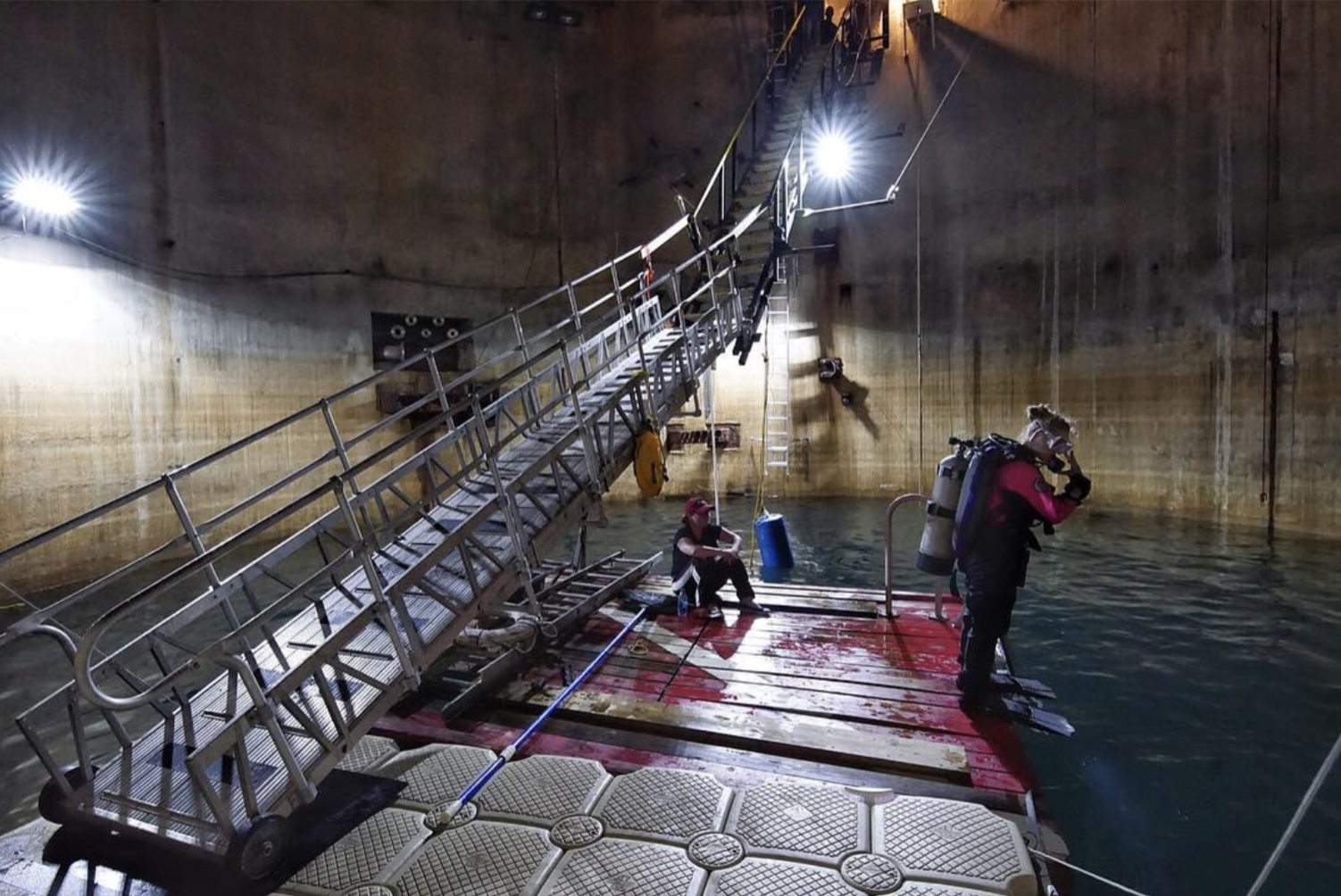
Valhalla is a decommissioned Atlas-F hardened nuclear missile silo located near Abilene, Texas and was formerly run by Dyess Air Force Base. The silo itself is divided into 2 separate silos. One is 2 stories tall and served as the command room and crew quarters, while the other is the main silo where the missile and fuel was held.
The main silo is 180ft tall from the base to the blast doors. This silo was once filled with many levels of equipment to service, fuel and guide the missile, but it’s now mostly empty and filled with nearly 130ft of water. The water comes from ground water that seeped through the concrete walls of the silo. The water is extremely clear and at a constant 60 degrees year round. Another interesting feature about this dive is that it qualifies as an Altitude Dive (2500ft above sea level), Night Dive, Deep Dive, and Wreck Dive in one!
Location: 8466-8472 US-277, Wingate, TX 79566
Flower Garden Banks National Marine Sanctuary
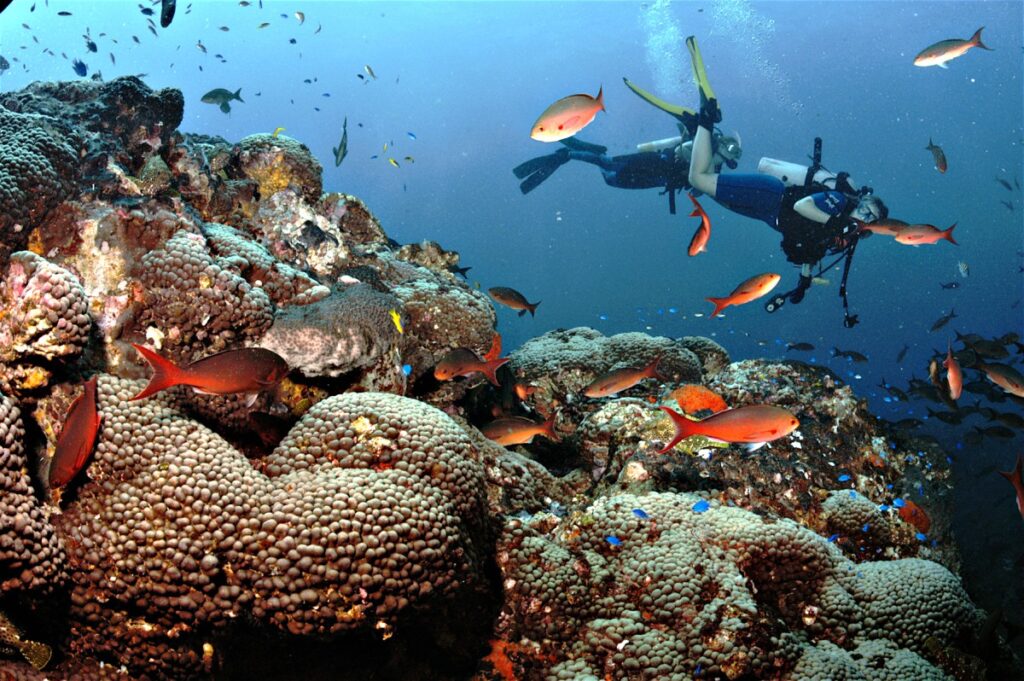
A diver’s paradise: situated approximately 125 miles off the coasts of Texas and Louisiana, the Flower Garden Banks sanctuary includes shallow water coral reefs, algal-sponges, and deeper reefs, full of black coral and other unique habitats. The sanctuary protects portions of 17 separate reefs and banks, which are a combination of small underwater mountains, ridges, troughs, and hard bottom patches along the continental shelf, created by underlying salt domes. You will be stunned by the famous hammerhead sharks and whale sharks known to frequent the area!
Location: Offshore near Galveston, Texas
The Texas Clipper
The Texas Clipper, a popular historical dive in the United States, is a ship that served for the U.S.S. Queens, and was a troop transport during World War II, and now lays 17 miles off from the South Padre Island. This ship is the third largest artificial reef in the United States. The multilevel diving experience at the Texas Clipper, which is extraordinarily large in size, is often compared to scuba diving in a large underwater museum!
Location: Offshore near South Padre Island, TX 78597, USA
Athens Scuba Park
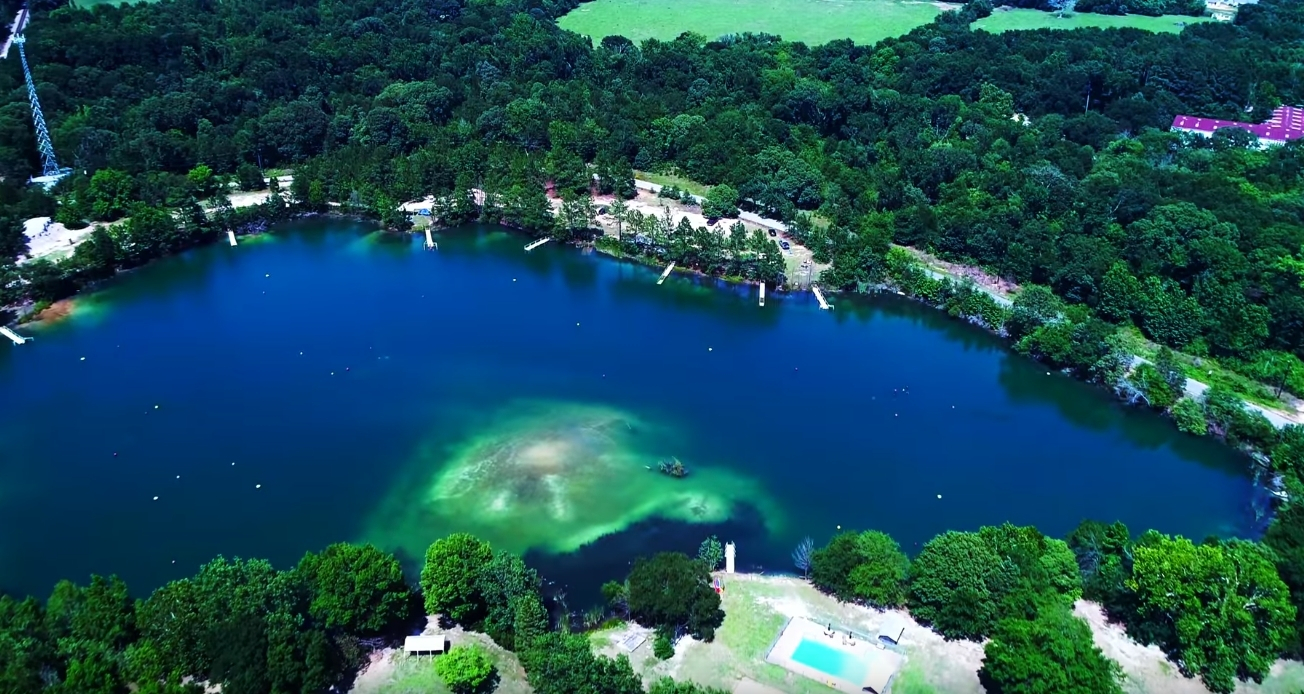
This unique scuba park is half a mile from the town square of Athens. The Athens Scuba Park hosts over 35 wrecks and allows divers to explore antique ruins while diving in clear, fresh water. This seven-acre lake is spread over a wide area and is also famous for night diving!
Location: 500 N Murchison St, Athens, TX 75751, USA
Hawaii
It comes as no surprise that Hawaii is a top contender for the best dive sites in the world. When we go to dive in the United States, often Hawaii is top of mind. Hawaii’s isolated geographical location makes for a host of dive sites to explore. From diving with Galapagos sharks to swimming through rock formations, Hawaii has it all. The marine life is very well protected in this area, so you can expect an abundance of marine life! Check out just some of the incredible dive sites you can find in this island state.
Carthaginian II
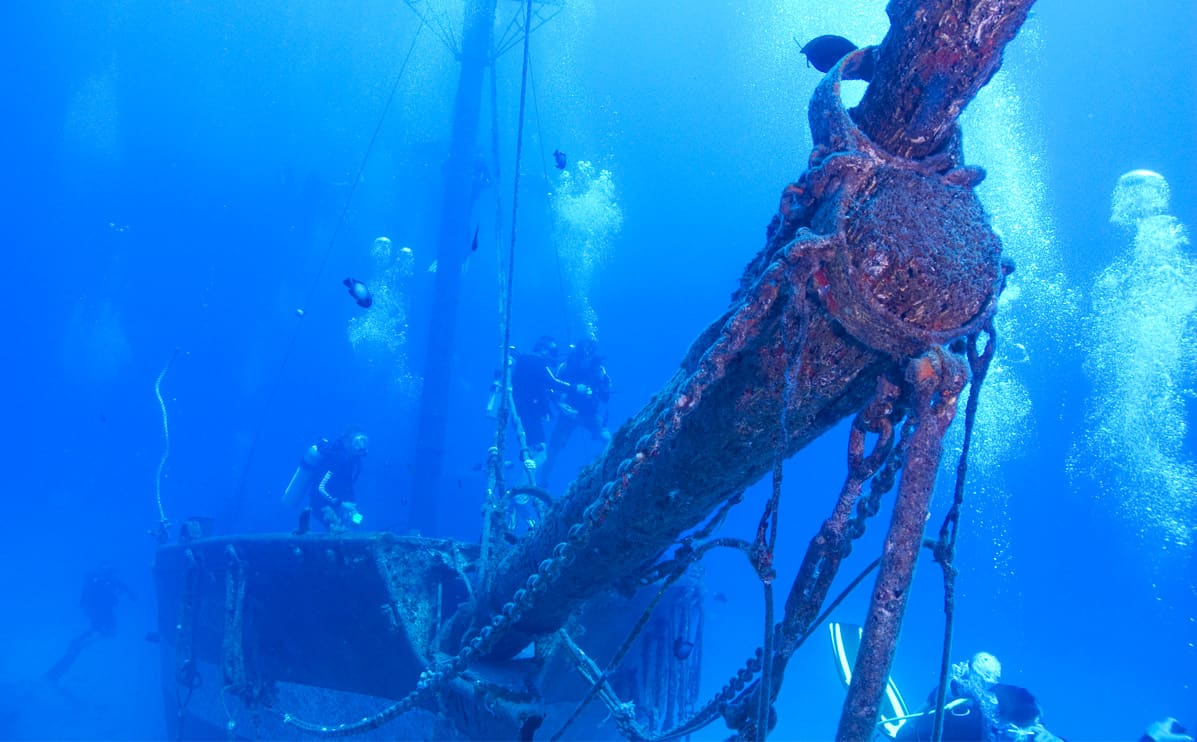
Located in Hawaii’s island of Maui, the Carthaginian II is considered a very popular shipwreck site. This semi-penetrable wreck allows divers to step back to a time when Lahaina was the Whaling capital of the Pacific. With a gentle current and 100 feet of visibility, this dive is perfect for all experience levels. Additionally, divers often see the Atlantis Submarine cruising by. The hull is a favorite of white tip reef sharks who can often be seen resting inside, as well as appearances from a few Hawaiian favorites: Eagle rays, dolphins, frog fish, eels, starfish, and many more!
Location: Offshore near Lahaina, Maui, Hawaii
First Cathedral
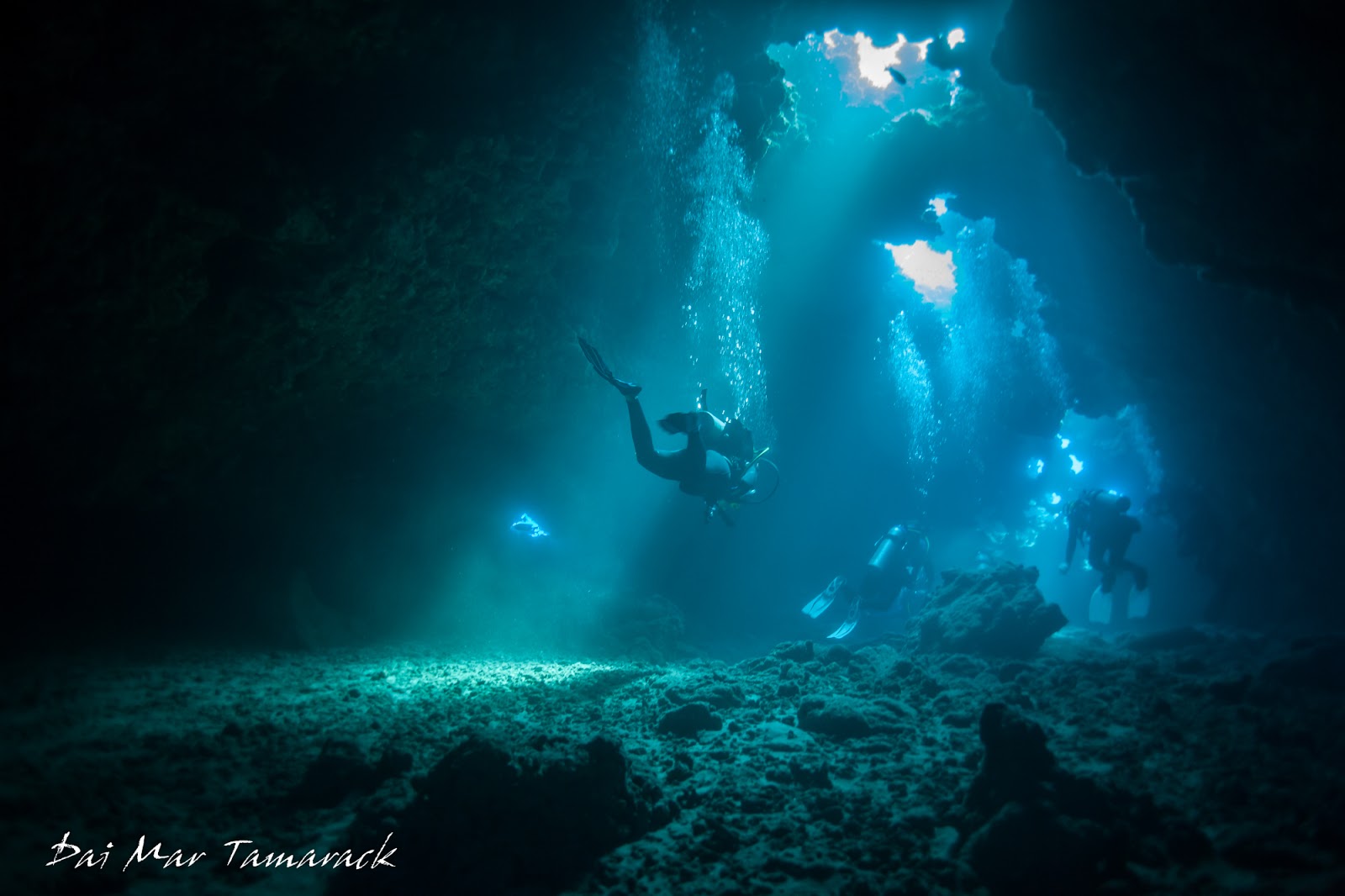
Situated in Lanai, Hawaii’s least inhabited island, the First Cathedral dive site is a favorite for marine life, including reef sharks, turtles and dolphins. Appropriately named, this site features cathedral-like structures, including large arches, a cavern and 20-foot ceilings. First Cathedral features a huge, two-story tall underwater cavern – or lava tube – consisting of tunnels, ridges and passageways. A portion of the roof collapsed, leaving a large hole in the top. On a sunny day, rays of light enter the opening and create a spotlight inside the cavern on fallen lava rock that’s called, the Altar. The rays of light entering through tiny holes in the back of the cavern, create a stained glass effect, similar to windows in a cathedral.
Location: Southeast of Hulopoe Bay, Lanai, Hawaii
Kahuna Canyon
Oahu’s Kahuna Canyon is famous for its bowl-shaped crater that is often compared to the Grand Canyon in Arizona. the bowl-shaped canyon is actually a former volcanic crater with a base at 100 feet and a top near 35 feet with a 200 yard long canyon. The stunning dive site is home to an abundance of marine life and open water. The underwater canyon is littered with caves and coral formations, which creates a perfect setting for a large variety of marine life, including parrotfish, unicorn surgeonfish, ulua, amberjacks, Moray eels, lobsters and much more!
Location: Offshore near Mokule’ia, Oahu, Hawaii
Manta Night Dive
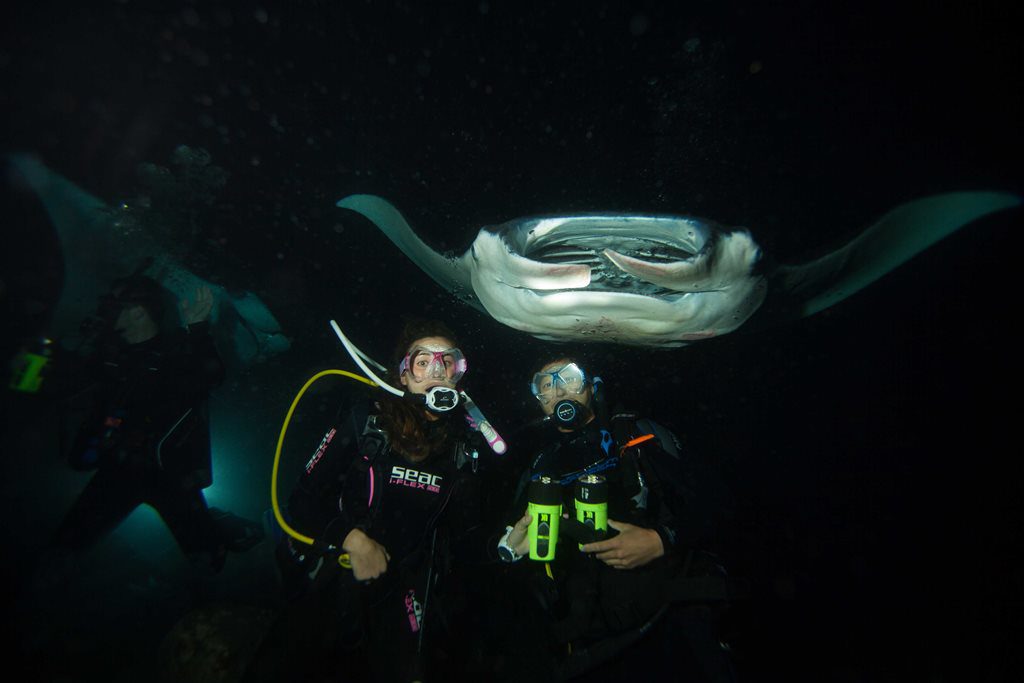
Hawaii’s Big Island hosts a very unique adventure: the Manta Night Dive, regarded as one of the most memorable dives on the planet. This experience allows divers to view the extraordinary underwater night life of the island. Divers go in when it is dark, welcomed by nocturnal critters and other mysterious sea creatures. The manta rays that inhabit Hawaiian waters belong to the Mobula alfredi species. These reef-dwelling manta rays are the second largest species of manta ray in the world, and can grow up to a wingspan of 18 ft (5.5m)! On average, the manta rays you can see around Kona will be about 12 ft.
Location: Offshore near Kona, Big Island, Hawaii
